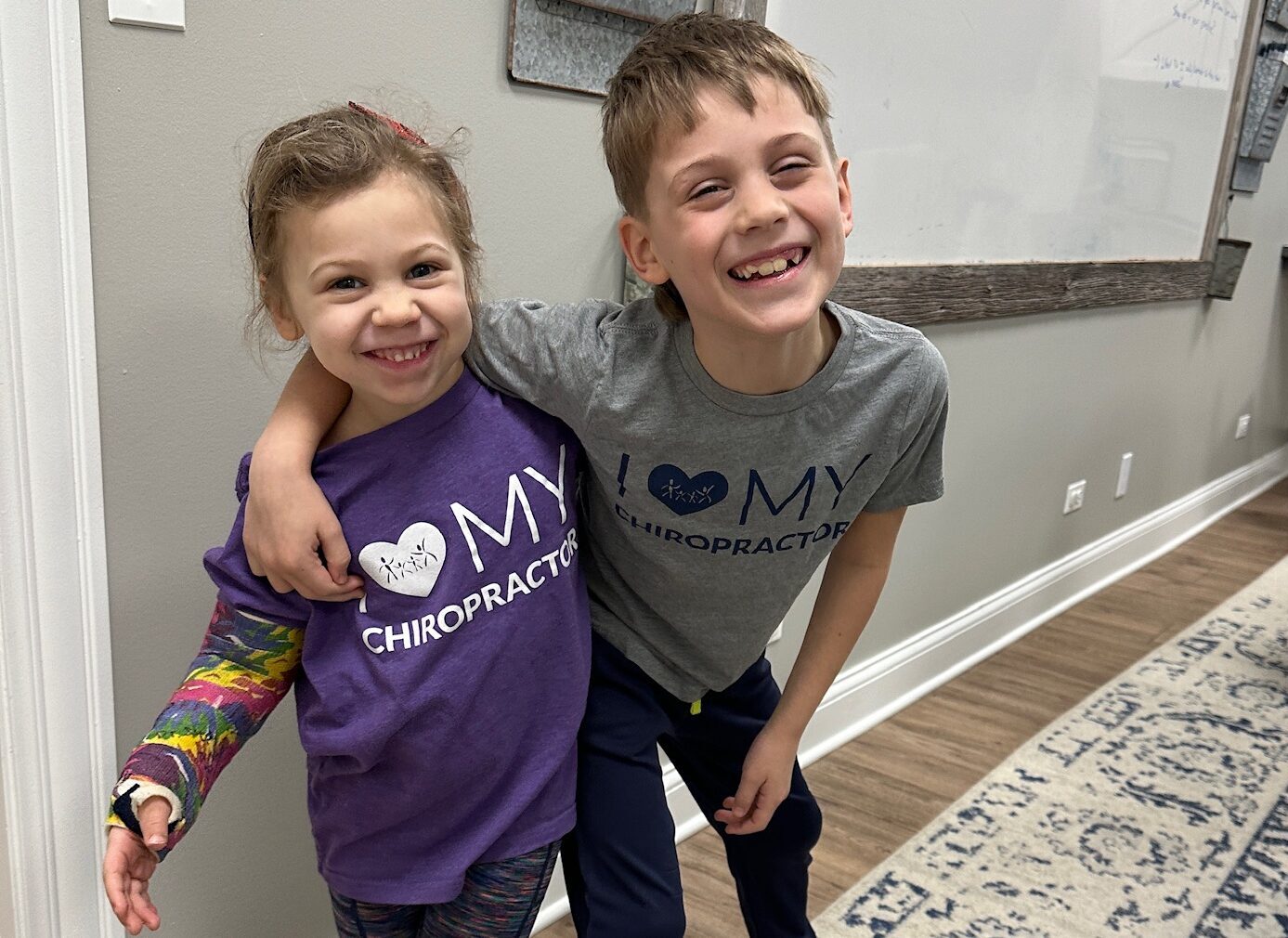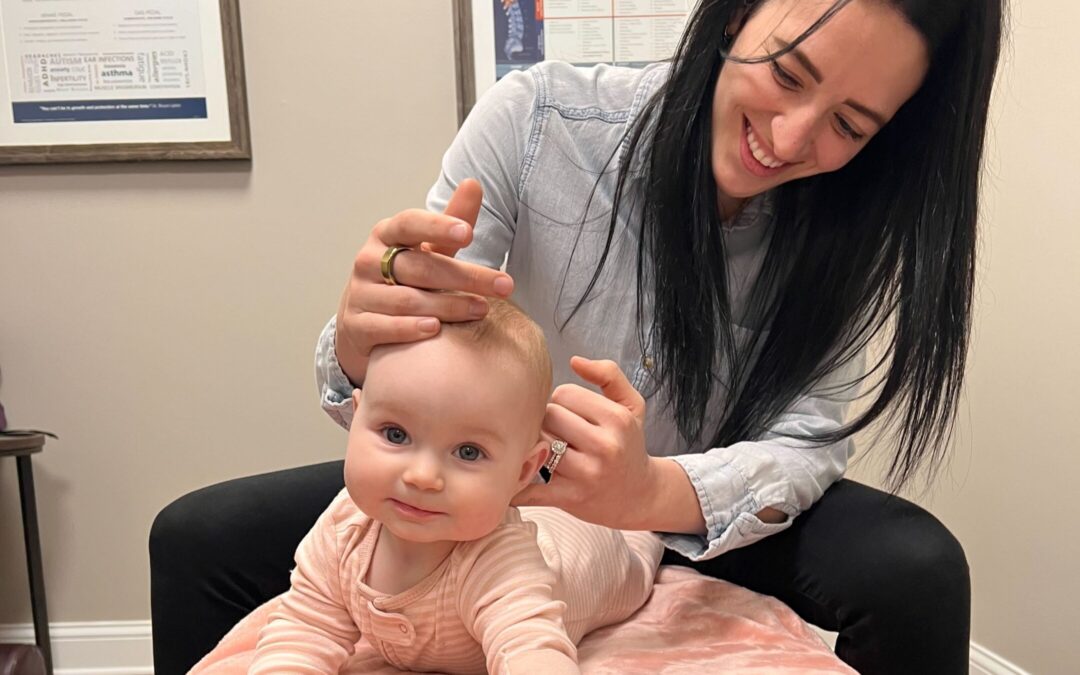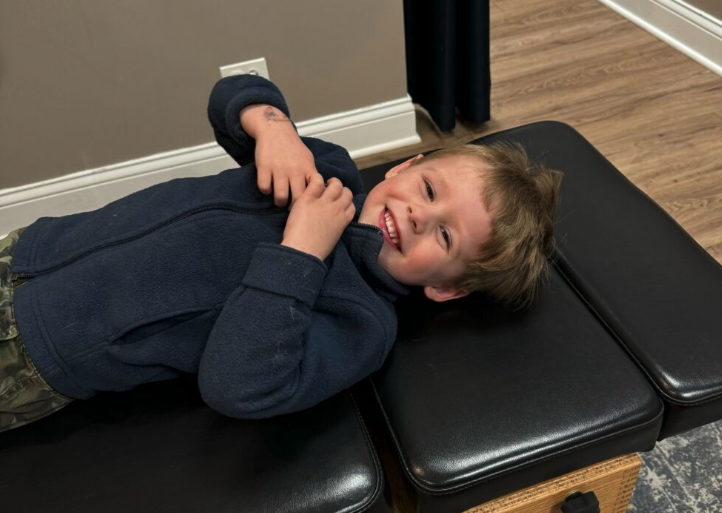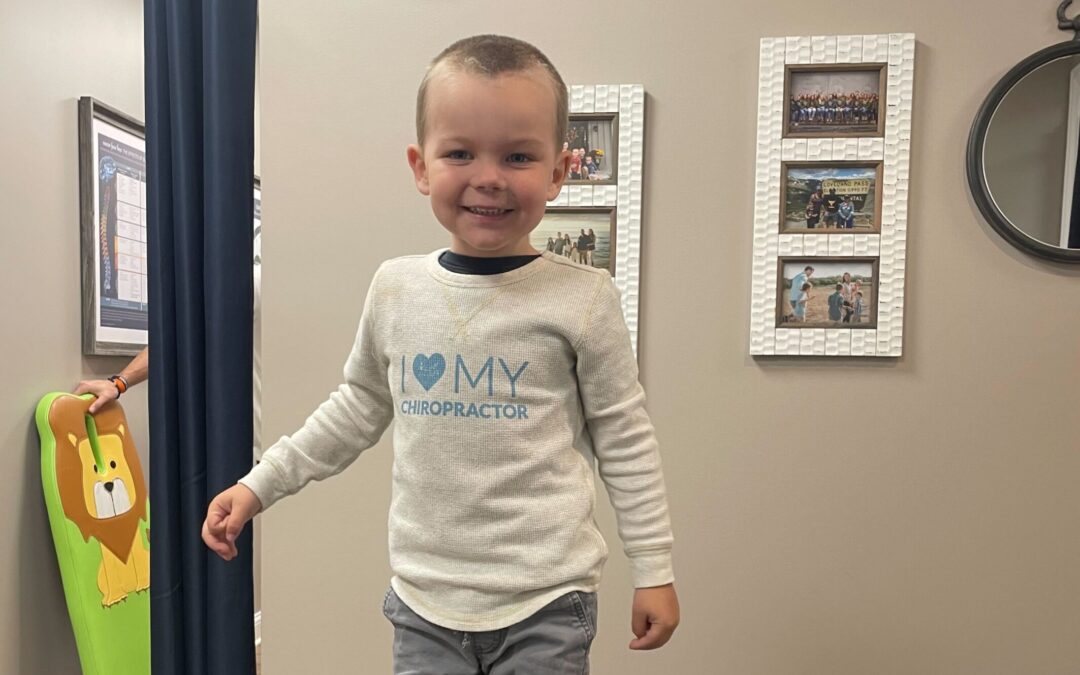Like most children struggling with autism, Stella’s daily struggles were not just confined to things like communication and emotional regulation. She also struggled with long-standing constipation and gut issues, immune challenges and allergies, and body awareness issues.
Her parents had her in a host of different therapies, tried all the diet changes, detoxes, and supplements, and were doing all they could to help her with various individual challenges.
But what they really wanted was one thing that could help all the daily challenges Stella faced and something that would make sense for them as to how all the different symptoms of autism were linked together.
Enter the vagus nerve, an entirely overlooked but essential component of autism.
After hearing about “The Perfect Storm” concept and our work with the vagus nerve and autism, they got Stella started with Neurologically-Focused Chiropractic Care, and soon so many of her daily challenges became so much better, leading to a vastly improved quality of life for the whole family.
Mom says, “Stella’s focus and sensory issues have improved so much. Chiropractic has definitely improved her allergies, pooping, and body awareness as well. She loves taking walks and trying new foods, and will lie on her stomach now and even do yoga with me. Also, no more green boogers during allergy season is a huge plus!”
Like Stella, so many parents desperately seek solutions for children with Autism Spectrum Disorder (ASD). While interventions like Applied Behavior Analysis (ABA) and Occupational Therapy (OT) teach coping skills, most do not address underlying causes for symptoms. Children continue suffering despite their families’ best efforts. We now recognize autism’s roots often stem from neurological dysfunction beginning very early in life.
Supporting the healthy development of key neurological pathways like the vagus nerve may provide missing links to help children truly thrive.
Helping parents and other providers better understand the vagus nerve’s indispensable role in processes impaired in ASD-like behavior, digestion, immunity, and communication is a core component of our work at PX Docs. Keep reading to discover how innovative drug-free options assessing vagus nerve function and optimizing nervous system regulationcan help children reach their full potential.
The Connection Between the Vagus Nerve and Autism
The vagus nerve is the longest and most complex of the 12 cranial nerves, interfacing with critical control centers in the brainstem. Considered the primary nerve of the parasympathetic “rest, digest, and regulate” aspect of the nervous system, the vagus nerve activates relaxation pathways, reduces blood pressure and heart rate, and controls both the digestive system and immune system in a major way.
Proper vagus nerve signaling regulates many functions disturbed in autism:
- Digestion: As a conductor of the enteric nervous system, the vagus nerve stimulates the release of enzymes, gut contractions, and microbiome balance required for proper digestion. These are often impaired in ASD.
- Inflammation: The vagus nerve controls key anti-inflammatory pathways, keeping inflammation in check. Children with autism frequently suffer from chronic inflammation and autoimmunity.
- Heart: The vagus nerve modulates heart rate variability and breathing associated with resilience to stress and capacity to socially engage, which are diminished in ASD.
- Communication: Cranial nerves VII (facial) and X (vagus) regulate facial expressions, listening, and vocalization. Impaired social communication is a hallmark of autism.
Optimal vagus nerve development and function is critical for physical and psychological health. Increasing evidence now recognizes impaired signaling of this important nerve early in life contributes to autism’s onset.
The “Perfect Storm” and Autism
Like conditions such as ADHD or sensory disorders, the cascade of events influencing autism often begins accumulating long before diagnosis. This sequence of stressors creating neurological dysfunction is known as the “Perfect Storm.”
The first signs of trouble emerge even before birth. Maternal infections, drug exposures, stress hormones, and immune factors in utero can gain access to the developing fetal nervous system and disrupt the maturation of key pathways like the vagus nerve.
Next, the birth process itself poses threats should interventions or complications arise. Physical trauma, hypoxia, and mechanical forces applied to the newborn’s delicate nerve fibers during delivery can cause injury. Since the vagus nerve connects directly with the brainstem, beginning in the medulla and throughout the cervical spine (neck), it is exceptionally vulnerable to damage, which can manifest as breastfeeding, digestive, or sleep deficits early on
After birth, repeated exposures to infections, toxins, stress, and dietary components further aggravate neurological imbalance. Like kindling added before the spark, the stage becomes set for chronic issues like immune dysfunction, gut disorders, and behavioral dysregulation, culminating in autism to ignite.
While research historically focused on autism’s genetic links, we now recognize the contributions of environmental influences and the Perfect Storm. Supporting healthy nervous system development from conception onward and addressing potential vagus nerve dysfunction via appropriate early intervention provides new opportunities to improve outcomes. Emerging insights specifically highlight the importance of assessing and caring for the easily disrupted yet critical vagus nerve system underlying so much function.
How Vagus Nerve Dysfunction Manifests In Autism
If we accept the vagus nerve’s importance for modulating inflammation, digestion, heart rate, and behavior—how exactly could disruption of this nerve contribute to autism spectrum disorder? Studies are increasingly revealing these connections between nervous system dysregulation, vagus nerve dysfunction, and Autism Spectrum Disorders:
Communication and Behavior Links
Several trials have shown children with autism frequently display signs of insufficient vagal tone, including:
- Decreased vocalizations
- Impaired recognition of their own names and social cues
- Flat facial expressions and monotone vocalization
The polyvagal theory explains how integrating facial gestures, listening, and vocalizing to properly communicate socially all require an intact vagus nerve. Dysfunction here impedes emotional signaling and self-regulation typical of ASD. Impaired non-verbal expression also contributes greatly to social disconnect and behavioral challenges.
Digestion and Inflammation:
Up to 91% of children with autism suffer gastrointestinal disturbances like diarrhea, constipation, and acid reflux regulated by the vagus nerve. And many experience chronic inflammation partly controlled by vagus nerve signaling. Impeding such a vital regulatory pathway early on severely impacts health.
Clinical Insights
Fascinating studies have shown significantly lower baseline heart rate variability in children with autism, indicating impaired vagus nerve tone and dominance of sympathetic “fight or flight” pathways.
Additionally, trials of vagus nerve stimulation for epilepsy documented collateral improvements in mood and behaviors among ASD children, suggesting neurological underpinnings. Supporting healthy vagus nerve development may prove pivotal for optimal function.
Assessing Vagus Nerve Function
Emerging insights demonstrate supporting nervous system balance should be a priority for overcoming autism. Fortunately, advanced testing now provides ways to quantify vagus nerve impairment beyond guesswork.
One powerful approach uses Heart Rate Variability (HRV) technology reflecting activation of “rest, digest, and regulate” parasympathetic branches like the vagus nerve. The scan measures changes in time intervals between heartbeats. Strong variability equates to healthy system adaptability and resilience indicative of well-developed pathways.
HRV tests establish baseline vagal tone, guide targeted care to optimize nervous system function, and track progress over time—an invaluable tool for ensuring children reach their potential. Knowing where the dysfunction lies paves the way for focused solutions.
Vagus Nerve Stimulation
One option for improving vagus nerve function that has been gaining traction is vagus nerve stimulation. Parents help their children with different practices aimed at stimulating the vagus nerve, attempting to improve anxiety and emotional challenges. Practices such as meditation, deep breathing, and yoga are exercised for this purpose. Fortunately, in today’s world, many parents and professionals are actively seeking out these beneficial health techniques for children.
However, despite these best efforts, it’s evident that they may not always be enough to help an overwhelmed, anxious, or irritable child struggling with autism. In all cases, it is most helpful for parents to turn to a more effective approach to stimulating their child’s vagus nerve and inducing a calming effect on their body: Neurologically-Focused Chiropractic adjustments.
These specialized chiropractic adjustments targeting areas of subluxation that interfere with neurological communication between the brain and the body offer a powerful means of vagus nerve stimulation. Our network of Neurologically-Focused Chiropractic within the PX Docs network specialize in precise and gentle adjustments proven to optimize nervous system function.
Once Neurologically-Focused Chiropractic Care has helped alleviate your child’s overactive sympathetic nervous system and neurological imbalance, other lifestyle measures and natural methods to stimulate the vagus nerve can become more effective.
Chiropractic Care to Support the Vagus Nerve
The specialized approach of PX Docs does not look to treat or cure autism but instead focuses entirely on finding the root cause(s) through an in-depth consultation and examination process that helps identify the exact subluxation and dysautonomia patterns disrupting proper neurological development and function. These issues, often originating from excessive maternal distress, birth interventions, and early exposure to toxins, are then continually exacerbated by repetitive stress, which disrupts the vagus nerve and the entire nervous system in children with autism.
Our PX Doctors undergo extensive training to learn how to properly read and interpret these incredibleINSiGHT Scans as well as how to apply custom tailored adjusting techniques that help improve neurological function and overall nervous system regulation.
With time, children with autism often experience improvements in sleep, digestion, immune response, and emotional regulation as their nervous system achieves balance. Enhanced brain connectivity facilitates motor skills, language development, and learning abilities. Parents frequently observe increased tolerance to previously triggering factors such as certain foods and chemicals.
A well-functioning vagus nerve plays a crucial role in the health of children on the autism spectrum. It influences the development of neurological pathways and helps build lifelong resilience and adaptability
The Vagus Nerve Offers New Hope
Like Stella, parents often feel hopeless after exhausting options attempting to help their children with autism. Yet emerging research shines new light on the long-overlooked vagus nerve controlling emotional regulation, digestion, and inflammation—areas often profoundly impacted in ASD. Optimizing the health of this critical pathway provides missing links to help children reach their potential without ongoing disability.
We finally have resources like:
- Advanced HRV testing quantifying current vagus nerve dysfunction
- Specialized chiropractic care expertly releases tension from the sympathetic nervous system and stimulates the vagus nerve and parasympathetic system
- Lifestyle approaches teaching children nervous system balance early in life
The future is ripe with hope and optimism for families affected by autism! Supporting nervous system regulation should become foundational for overcoming autism, empowering children to thrive from within.
If your child’s autism involves digestive problems, learning disabilities, or emotional dysregulation, assessing vagus nerve function and restoring normal signaling could make a world of difference, augmenting traditional skill-based therapies. Refer to the PX Docs directory to connect with cutting-edge providers focused on nervous system-based care tailored specifically for your child!





